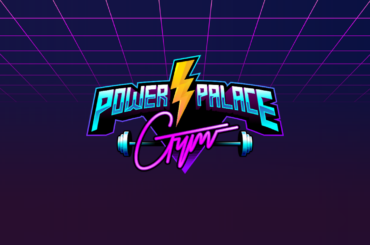Note: This is an older article. I sold my MCN Power Up TV to Thunder Studios in January 2015. I now work as a consultant. Consider hiring me!
Every week I am contacted by someone who wants to start a YouTube network and many of them act like all they have to do is make a website and a forum, and things will just happen. Or I get contacted by people who question my network’s numbers; they doubt we really have so many Partners and total network subscribers because I haven’t been able to build up our social networks, or get my previous Indiegogo project fully funded.
I am writing this article to educate folks on the inner workings of a network at its earliest phase of growth; the launch.
The Challenge is the Partners Themselves
My efforts with Power Up TV are not comparable to other MCNs, as almost all of them used a different strategy than me. This strategy they used was called “money hose“, where prior TV executives raised investor money and spent a lot on shot-gun blasted paid marketing while securing endorsements from large YouTube Partners who enjoy 0% revenue share contracts, just so the network can grow fast with the goal of selling the MCNs to large corporations like Disney and Time-Warner.
My strategy — and the strategy that almost everyone who contacts me about starting a network needs to use — is called lean startup. Although the money hose strategy is super effective, we don’t have the ability to turn the faucet on. So lean startup MCNs like me need to be more creative in our strategy.

A lot of people wholly misunderstand the amount of work involved in starting and building a YouTube network from the ground up.
“I’ll just recruit a bunch of YouTubers and it’ll grow,” is not realistic. You have to incentive your Partners to help you grow the business. As a network you have zero ability to reach the subscribers of your Partners without the direct assistance of your Partners.
Yes, collectively we have over 1 million subscribers. However the only way I can currently reach those subscribers is if all my Partners upload a video to their channel endorsing what I need endorsed. And therein lies your first hurdle in growing a social presence from your network; your Partners are the gatekeepers.
The recruiter program we have has been very effective at encouraging our Partners to recruit new Partners from their own subscriber pools, but the truth is many YouTubers who join us do not have large followings. I built our YouTube Creator Academy course to provide them with a step by step guide on how to be more professional with the managing of their channel, but even then some people have still chosen to ignore my advice.
By contrast, during the Indiegogo campaign for Martell TV, I tried to get a few Partners to buy a Station in our app and pointed out to them it will help them build the audience they need to do things like crowdfunding projects. However, they wanted to “see and wait” how the new platform goes in the future. Then they launched their Kickstarters to fund their own indie films and shows, and ended up raising tens of dollars. At least Martell TV raised several thousand.
Understanding YouTubers and how to lead them
As I mentioned earlier, Partners ignoring my advice makes my job harder. As a network with no lock-in contracts, Partners who are unhappy with the service I provide are free to leave for another network who entices them with offers their employees have no intentions of keeping. After the Partner joins a network like — say Maker Studios or Machinima — the Partner is held to a two year contract and cannot leave, even if the network refuses to provide any of the services to the Partner when they were recruited.
There are two main things that YouTubers want from networks: promotion and sponsorships.
- To provide promotion my network must have marketing reach through social networks, mailing lists and press relations.
- To obtain sponsorships my network must have a monetizable audience that brands want to market to.
This means that before good sponsorships can be obtained, you must first build good promotion channels.
The standard way to build promotion channels is to use lots of paid marketing to grow the audience, and leverage the existing press relations of the founders. However my network does not have outsider investment money and my press relations are weak. In order for me to cultivate press relations I have to establish notability for the network by raising the social presence of the network so that it is more clear to journalists that our network is worth reporting on. Journalists these days are similar to brands in that Gawker’s style of reporting has taken hold; something isn’t considered worthy for journalists to report on unless there is already some massive organic discussion happening about the story. If the topic isn’t big on Google Trends, they don’t want to write about it.
So the first order of business is to grow the social counters for Power Up TV to demonstrate we are a network that is worthy of journalists to have relationships with.
And this is a general problem I’ve ran into, even while working as a consultant. Many creative types will not listen to anything that resembles a business focused conversation. They just want to play with their webcams all day, and push content into the ether that is YouTube Search without any rational strategy for how their videos will get discovered.
The biggest challenge with building a YouTube network isn’t the time investment to create a nice website or write a business plan. The hardest thing is herding the cats that are your YouTube Partners. A lot of creators just won’t listen to your advice and get on board with your efforts to build up your own mailing lists and social presences so that you can promote their content using those marketing methods.
Instead they want to focus on their own little bubbles and be an island unto themselves.
So what are some solutions I’ve used to overcome the problem of YouTube creators being a fickle bunch who think they know better?
Well, you have to give them what they want and do it in such a way that they fall in line with your own plans.
Content lockers and YouTube Academy
As an entrepreneur with limited resources I am always thinking about what is the least amount of effort I can put forth to obtain the highest amount of reward. Before I spend money into marketing or building new features for a website, I first consider what the rewards will be. I’m generally trying to achieve several things with a single action. The best example of this is the Creator Academy portion of the Power Up TV website.
I noticed the startup Creator Up at VidCon was moving into providing specialized knowledge training for YouTubers. Officially Google has the YouTube Creator Academy but the information is, in my opinion, a little scarce. They’ve spent a lot of time and energy making a flashy e-learning platform but not enough time providing detailed information on how a total beginner can grow a channel. This is why services like Creator Up can find a niche.
I saw an opportunity to take all of the knowledge I’ve acquired over the years and create a comprehensive e-learning course that provides more information than the official YouTube Academy but has less of the high-production values that Creator Up has. Arming my Partners with this information would help me build a stronger relationship with the students and the Power Up TV brand, while also giving me the opportunity to incentive them to help build my social presences on Facebook and Twitter.
So the Power Up TV Creators Academy achieved several things.
- Taught my Partners more productive habits so their own efforts will be better rewarded, leading to less frustration.
- Convinced them to follow my Twitter and Facebook Pages, allowing the network social presence to grow.
- Allowed me to obtain the email addresses of anyone else they shared the coupon code with, and have an opportunity to convert these YouTubers into joining my network.
- Better SEO the network website for searches related to YouTube audience development, increasing views and gaining subscribers.
- Have a good story for journalists to potentially cover.
By building one thing, I was able to achieve several goals. These are the kinds of actions I like to take and its why I can operate with such a small budget; I maximize my time and efforts for the highest possible results.
Final Thoughts
I could elaborate further on this topic, but I think you get the idea. There are hundreds of YouTube networks floating around now, and you have to be inventive to stand out from the crowd. Money won’t solve all the problems; the most important thing is finding a unique value proposition to offer to YouTube Partners, building an effective way to communicate that value and then delivering on that promise.
It’s just like any other business, really.




